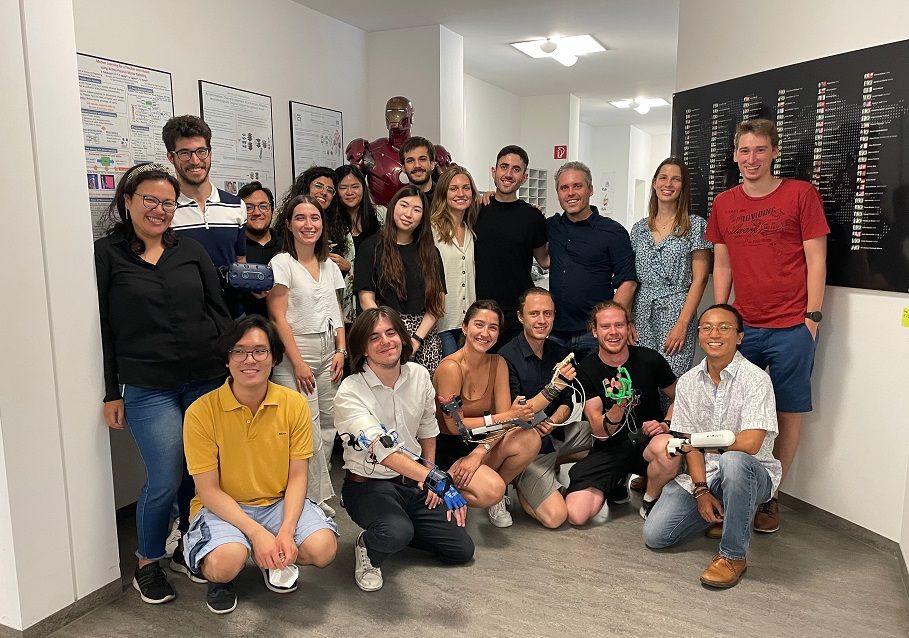Preparing to apply to the master’s in Neuroengineering, which has been my dream for the last three years, I took many related courses. One that stood out was “Human-Centered Neuroengineering: Neurorehabilitation”, again given by Nicolas Berberich and Natalia Paredes Acuña.

Our project was inspired by the phenomenal paper by Surjo R. Soekadar and colleagues (just like for my bachelor’s thesis). With the help of my teammates Christian Ritter, Miriam Senne, and Onur İçin, we ventured to design a tendon-driven 3D-printed hand exoskeleton. Our exoskeleton aids with pinch-grasp movements, mirroring the device used in the referenced study.
Yet, we wanted to take it a step further. By using cost-effective materials, we made our version more accessible. Moreover, our device gives vibrotactile feedback—meaning it vibrates based on the strength of the grip. Overall, our system could be beneficial for stroke patients with limited hand mobility and those who may have lost their touch sensation due to peripheral neuropathy.
For an in-depth look, here’s our final report:
Following our presentation, our instructors saw potential in our work and proposed turning it into a scientific paper. We’re eagerly working on this and look forward to sharing more soon.